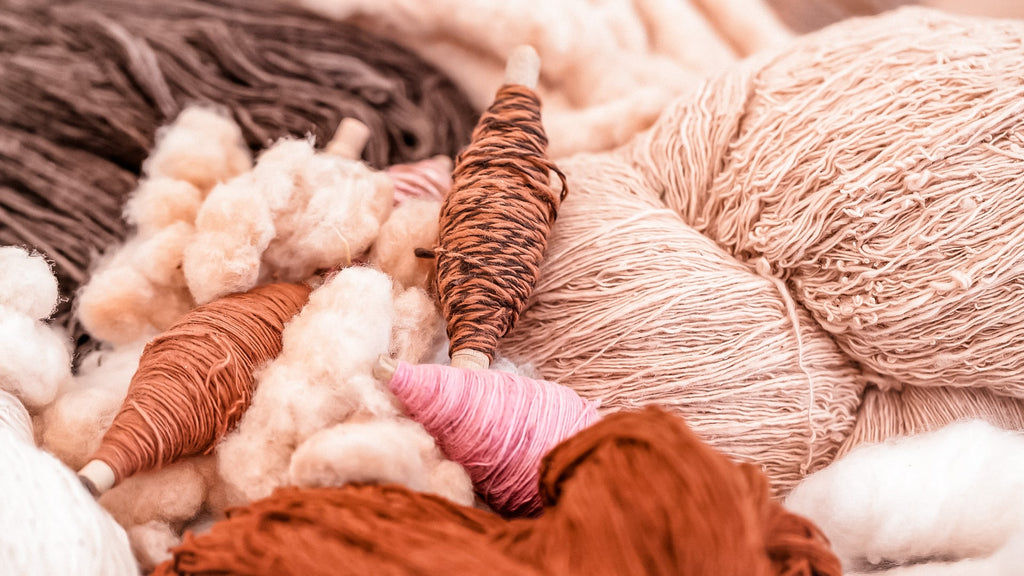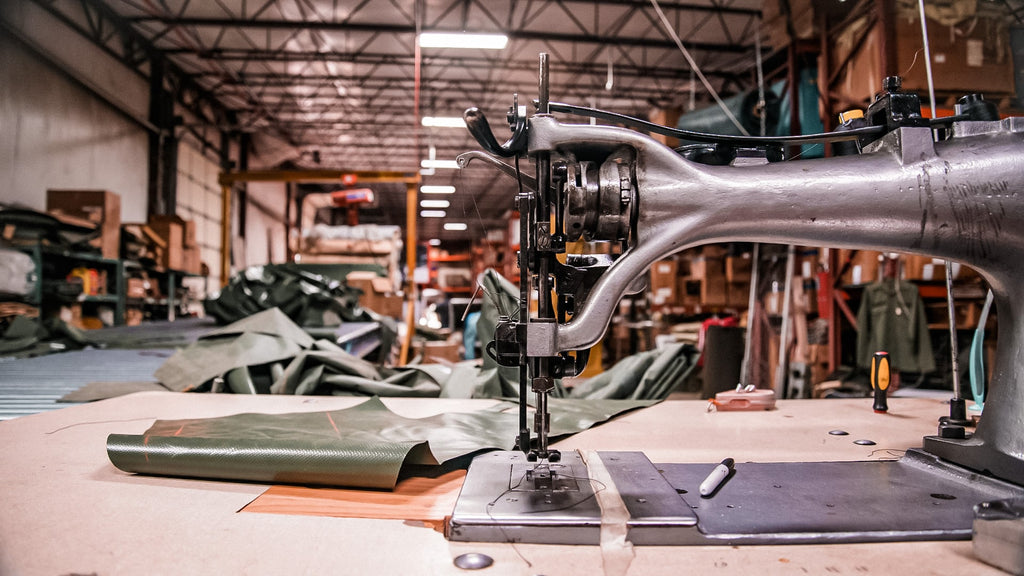A few weeks ago, a charity reached out to me for help creating an eco friendly t shirt line to compliment the environmental work they were doing. So, I took the call to learn more about the project. I am not going to share the charity because I think they are actually doing some cool stuff. And, I think it’s unfair to throw shade at an entire organization because of one, kind of annoying, very misguided employee. But, I do want to share what went down on this call, because I think it is a great example of what startup brands should not be doing.
So, what I quickly realized on our call is that they thought I had some special magical solution that would allow them to create whatever they wanted and still call it sustainable and ethical. And, they weren’t going to get off the phone with me until I told them the secret.
If it wasn’t so annoying it would have been flattering. New brands, please remember, when experts agree to get on the phone with you, be respectful of their time. Do your own research before you hop on the call.
The conversation went around and around in circles. With me finally, exhausted, exasperated, and just wanting it to end saying – well if you care so much about having zero impact, why don’t you just not make any t-shirts at all? Because, at the end of the day I don’t think anyone really wants your branded eco friendly t shirt with a percentage donated back to your own charity – you are just creating more garbage!
And, That’s Where The Inspiration For Todays Article Came From
But, before we get started.
Have you heard about the totally FREE LIVE GROUP COACHING CALLS that are happening live, only on September 27 and September 28, 2022?
This is your chance to get all of your fashion startup questions answered by me – for free!
Plus, when you show up live you’ll get a copy of my Startup Tool Kit – with over 80 different startup resources that you need to know about as a fashion entrepreneur.
Because this is live, and I will be providing individual coaching, space is extremely limited. So, make sure to sign up asap while you still can.
What I realized after I hung up the phone was this conversation was the most perfect example of what not to do when designing a clothing line. And my aggravation could be turned into a post for your fashion startup benefit!
So, here is how this post is going to go. First, I am going to break down what this brand wanted from me and why it was so misguided. Then, I am going to share what you could, and probably should, be doing instead.
Because, the solution here is not for you to abandon your dream of starting a clothing line (even if it’s just an eco friendly t shirt). My goal is to help you make it the best darn line possible.
Let’s go.
They Wanted The Most Eco Fibers

Saying I want the most eco friendly sustainable fabrics ever, is like saying I want to sprout wings and fly, and also be able to breathe underwater. It’s a pipe dream. It’s never going to happen.
There is no stamp of approval, universally accepted, most eco fiber ever. And if anyone tells you otherwise, I can confidentially say they are lying to you.
Here’s why. Well, actually, 3 whys – there are 3 reasons a universal perfect fiber does not, and probably will never exist.
One. Nothing In This World Is Perfect.
Just like how we all know that behind the seemingly perfect Instagram lives of influencers lies a skilled photoshop-er. Brands that claim to be “the most” anything is relying on tricky wording, good PR teams, and a little bit of greenwashing.
The first thing we need to do is come to grips with the fact that anything we do will have a ripple effect on the planet. Unless your brand is teach people how to live remotely off the land, nothing you do will be perfect. And, that’s ok. The goal here is to do the best you can. And, I am going to get more into that when we talk about reason 3.
Two. The Rules Are Constantly Changing.
For years, the Higgs Index used “science” and was the gold standard of what was sustainable and what wasn’t. But, in 2020 “Figures from the all-new fibre scoring tool show the environmental impact of polyester according to the MSI has fallen from 44 to 36 – making it by far and away the most sustainable fibre on the planet.”
And, this sounds kind of crazy – because for the past decade we have been conditioned by the media to believe that polyester is basically the epitome of pure evil in the fashion world.
The same type of story has happened with cotton. The media blasted brands that were using 100% organic cotton, for the fiber being for being destructive and thirsty. Which, wasn’t the full story.
And, the list of misrepresented fibers, (including recycled polyester, that isn’t actually cleaning up the ocean in any way) goes on and on.
Brands jump from one trendy “it” fiber of the season to the next. Constantly trying to “win” at the sustainability game where the rules are constantly changing.
It’s exhausting. And, to be candid, isn’t helping anyone – including the planet.
And, this brings me to reason 3.
Three. Sustainability Is Personal, Not Universal.
Now, this is the one I get the most push back on. Because we all have opinions, and we all think our opinions or right (hey, it’s just human nature). But, please give me a minute to explain.
Like I said in reason 1 we can’t be totally perfect – that is in a macro sense. What we can do, however, is be perfect in a micro sense. When we know what is important to us, whether it’s renewable energy, all-natural products, or labor issues, then we can create a strategic plan to go after those goals specifically.
Let’s look at my favorite example of vegan pleather vs real animals hides. Vegans insist that pleather is the more moral option, while hardcore zero-waste advocates believe wearing real leather that is a byproduct of the meat industry is the way to go.
The reality is both sides are right, and both sides are kind of wrong. Because, you will never be able to please both sides.
And, the reality is, when it comes to sustainable and ethical practices you can’t please everyone. I am going to say it one last time, there isn’t some magical fiber that solves all the world’s problems. Like I said early everything has a ripple effect and creates an impact.
And right here is the key ingredient to startup fashion success.
By picking something very micro, new brands can become almost perfect at that one cause, and build an amazing and loyal following. When brands try to be eco, sustainable, ethical, conscious, basically everything to everyone – it all just kind of ends up feeling like greenwashing.
They Wanted To Make Locally With India Prices

This isn’t the first time I got this request. And, I like to call it “The Fashion Nova Effect”.
The conversation always goes more or less the same way.
Me “so, what is your target costing looking like?”
Them “well we want to make in India or China, but shipping all the way to the US causes so much pollution, so ideally we would like to make in the USA for the same prices as Asia and eliminate the transportation emissions.”
(Riiight… let me get my magic want out).
You can’t have you cake and eat it to. It’s just not possible.
Well, it kind of is. Because companies like Fashion Nova are pumping out garbage fashion domestically in LA that they are able to sell for something like $10.
Now, While It’s Possible, It’s Really Not Ethical. At All.
This topic reminds me of this other really slimy client I once had – I actually ended up firing him as a client. He was one of those guys that thought he was smarter than everyone in the room. Full of toxic masculinity and mansplaining… I’m sure you know the type. He always wanted to do business on the phone instead of by email so he could claim I said something different than I had. After the first few times, I caught onto his game and banned him from calling me – everything would have to be done with a paper trail. When I did that it made him furious.
Anyway, this guy really wanted to work with my factory because it had a good reputation and paid everyone fairly. But, he insisted we do it at the Fashion Nova price. I was like, my man, the reason we have a good reputation and can pay everyone fairly is because we charge more than an LA sweatshop (because that is essentially what those places are).
He wanted to pay Fashion Nova prices and call it “empowerment” – to this day I still think about publicly calling him out – basically, he used my good reputation to con a huge influencer into working with him, then pulled the order from me to go for a cheaper LA factory with completely unethical prices.
Anyway… Ethical fashion made with fair wages in America costs more money. Period. Full stop.
So, if making locally is important to you, and so is fair wages – be prepared to pay a lot more. If you don’t have the budget for that, it’s ok to make things overseas.
But when you make it overseas you are left with the emissions piece of the puzzle. This leads me to our next topic.
They Wanted Zero Emissions Without Doing The Work

Finally, we decided that making in India or China was the right move for them because of their budgeting constraints. Then, they started building this whole campaign around carbon credits. And wanted to be applauded as a zero-emissions industry leader for their carbon offsetting purchases.
Now, I don’t know how much you know about buying emissions credits, and hey, I guess it’s better than nothing. But, the reality of the program is that it’s a cheap shortcut, that often doesn’t actually do much of anything.
There have even been quite a few recent articles talking about how the programs are very grey, no one really knows where all the money is going, and there is no concrete proof they are working to help clean up the planet.
To me buying carbon credits is the equivalent of every kid getting a trophy. It doesn’t matter what you are actually doing, how toxic your company really is – as long as you’re trying (read, spending money for someone else to clean up your mess), that’s good enough.
If you are interested in learning more about carbon credits and how they aren’t a get-out-of-jail-free card, read on here.
Basically, my point is, sure try.
But, Let’s Not Pretend Companies That Buy Carbon Credits Are Doing More Than They Really Are.
So, what can you do instead?
The reality is you will always be creating pollution in business, even in digital businesses. And, for me, personally, I don’t think the solution is carbon credits.
How about creating your own program? Or, investing your profits into people who are doing good things. For example, with your profits, you could create a community garden that not only produces food for those in need but also helps to requester soil through regenerative farming.
If you don’t know what regenerative farming is, you must check it out! It’s really cool. If you are into organic cotton or GOTS certified organics, this is next level! It is one of the only methods that is actually proven to be able to help reverse climate change!
What I am saying is, don’t pay someone to do the work for you, and hope they do what they say they are going to do. Instead, create your own impact. When you do this, not only are you creating real change the world needs, but you are also helping to build a loyal community around your brand.
Do You Really Care About Reducing Your Foot Print? Then Stop Reinventing The Wheel!

There is a lot of behind-the-scenes work that goes into developing a custom garment. Here is generally how the process goes.
A brand buys shirts and materials that they like and want to replicate, but maybe change just a little bit (think something like, I love this t shirt I have had for 10 years but wish the sleeves were 2” shorter, and it was made of cotton instead of poly).
They then send the materials and garments to fabric suppliers and factories.
The factory then sends them back counter swatches and samples.
There are then rounds of approvals like lab dips, strike-offs, and fit samples that all get sent back and forth multiple times.
All of these processes waste resources, money, and also, it’s a ton of shipping.
Why not just use an eco friendly t shirt that was already created and is sitting in a warehouse, probably, relatively, near your home…
Welcome To The World Of Blanks.
Which is just what they sound like. Blank garments that you can print your custom designs on.
The market for blanks is seriously over-saturated, and you can find basically anything you are looking for. It’s all already been made. Including organic basics, like certified organic cotton, made in fair trade factories where workers make a living wage.
Here are a few brands I recommend.
They Wanted to Ignore The Inconvenient Truth That Recycling Uses Resources

I blame elementary school for this one. For some reason, we were all taught that recycling was this magical system. A place where if we just took 3 extra seconds to separate our plastics from our metals from our papers – we could toss all our garbage there, and something new, and shinny, and just as good, would pop out on the other end.
Well, now I know this was very false.
And, it’s important to understand just how false this belief is, because many brands are trying to use recycling as a loop whole to create a fully circular cradle-to-cradle product.
The person on the phone with me kept saying they wanted to create a cradle to cradle product, and when I started talking about what that actually entails they were like… nope, we will just give our customers info on where to send their old clothes to have them recycled or, in their case, most likely down cycled and turned into insulation.
Garment Recycling Is Not The Solution You Slap On At The End Of Your Supply Chain When You Realize That Designing And Producing A Truly Circular Product Will Be Too Expensive, Or Too Hard To Figure Out.
Instead, recycling should be used as a last resort. When you exhaust and try all other systems and options, but nothing else works.
So, if circularity is important to you. That means you need to carefully and consciously design your product from the fiber up. Taking into account where every single component comes from and where it returns to.
If recycling is a band-aid to fix holes in your system, then you’re not doing the circular sustainable fashion thing right.
Again, if you are choosing to help your customers recycle because hey, it’s better than nothing. Well then, that’s ok too. But, let’s not pretend like it’s a groundbreaking innovative new process.
Want to learn more about recycling? Check out this article Everything American’s Think They Know About Recycling Is Probably Wrong…
For me, the most interesting takeaway was that waste management is a business. And, because of that the cost of recycling is high, and will probably remain high. Maybe even get higher as more and more brands want to add waste to their brand stories.
So, What You Could Make Instead?

Right now, you might be thinking, what’s the point!? Nothing I do will be good enough. But, I am here to tell you – all hope is not lost.
First, Let’s All Agree, No More Logo Ts
Instead of slapping a logo on a tee or beanie, focus on creating a thoughtful design.
When brands logo-ize gear the goal is almost always to gain brand recognition. It is to turn their customers into walking billboards and to have them then spread the news of their brand.
Instead of your goal to be logos everywhere, really think about making conscious designs. Because, at the end of the day that is what people want.
The reality is that most of the clothing in landfills, or that used to get shipped to Africa and Haiti was branded gear that no one wanted in the first place.
If you want to learn more about just how wasteful tees are check out this article about secondhand in Haiti.
This article is an oldie, but still relevant today.
Also, did you know that before the super bowl and other supporting events 2 sets of branded gear are made each with one team winning. That is how you are able to buy your super bowl winner t shirt 5 minutes after the game. The losing team’s “winner shirts” then get sent to a developing country as donations.
Lastly, check out this post from virtue and vice about breast cancer awareness shirts – many of the people that are making these charity shirts are the very people that need that charity money the most.
Think Outside The Branded Eco Friendly T Shirt Box
Now, if you are making a cool design that you know people would want to wear – I say go for it. This advice is not for you. But, if you just want to put your logo on everything, keep reading.
Who says you need to be making tshirts, there are lots of ways of promoting your brand that isn’t an eco friendly t shirt or hoody… how about one of these?
Patches and Pins
Here are a few pros of making patches and pins instead of garments. One, they are small and lightweight, meaning your emissions from shipping (and also your costs) will be much lower.
Two, you are helping people DIY and upcycle their own stuff at home that they might have thrown away. For example, a shirt with a stain could easily be covered up by one of your fashionable and stylish patches.
Digital Products
While digital products do have their own carbon footprint, they tend to have a lower one than apparel. Instead of making a branded eco friendly t shirt, maybe you could create a printable recycling cheat sheet for people to hang in their homes. Or, something else that creatively ties back to your brand and your values.
If You Must Make Branded Products, Please Be Thoughtful
Make something people really need. Enough with the reusable tote bags. I have literally drawers full of them. Most people don’t need anymore.
Instead, go back to your target customer and what their problems are. Maybe you can create something that is branded that they really need.
For example. I work with lots of fashion brands. And the one thing I noticed I always needed was a measuring tape. So, I created some branded measuring tapes for my holiday client gifts.
I still get the same advertising benefits of a branded shirt or tote bag, but this is something that my clients actually need and will really use.
So, Does The World Need Another Eco Friendly T Shirt?
Well, that depends.
My final thoughts. If you are making something cool, that is art, and that is unique. Yes. Go for it! If you just want to turn your customers into an advertisement for your brand by putting your logo on everything and anything – it might be time to re-think your strategy and values.
